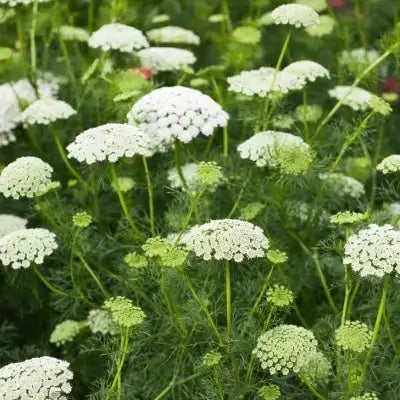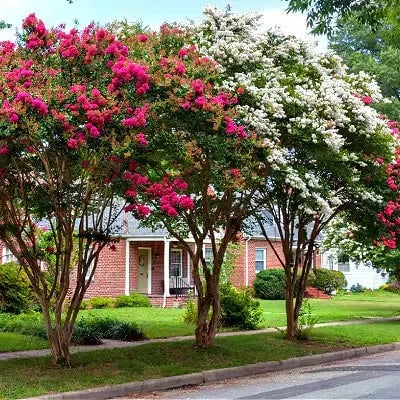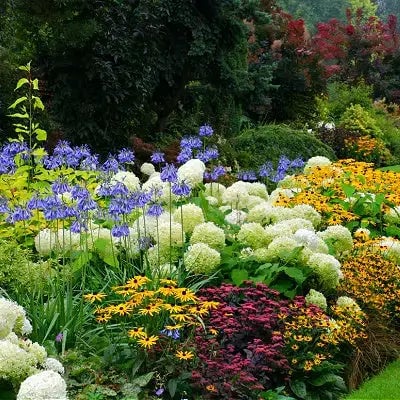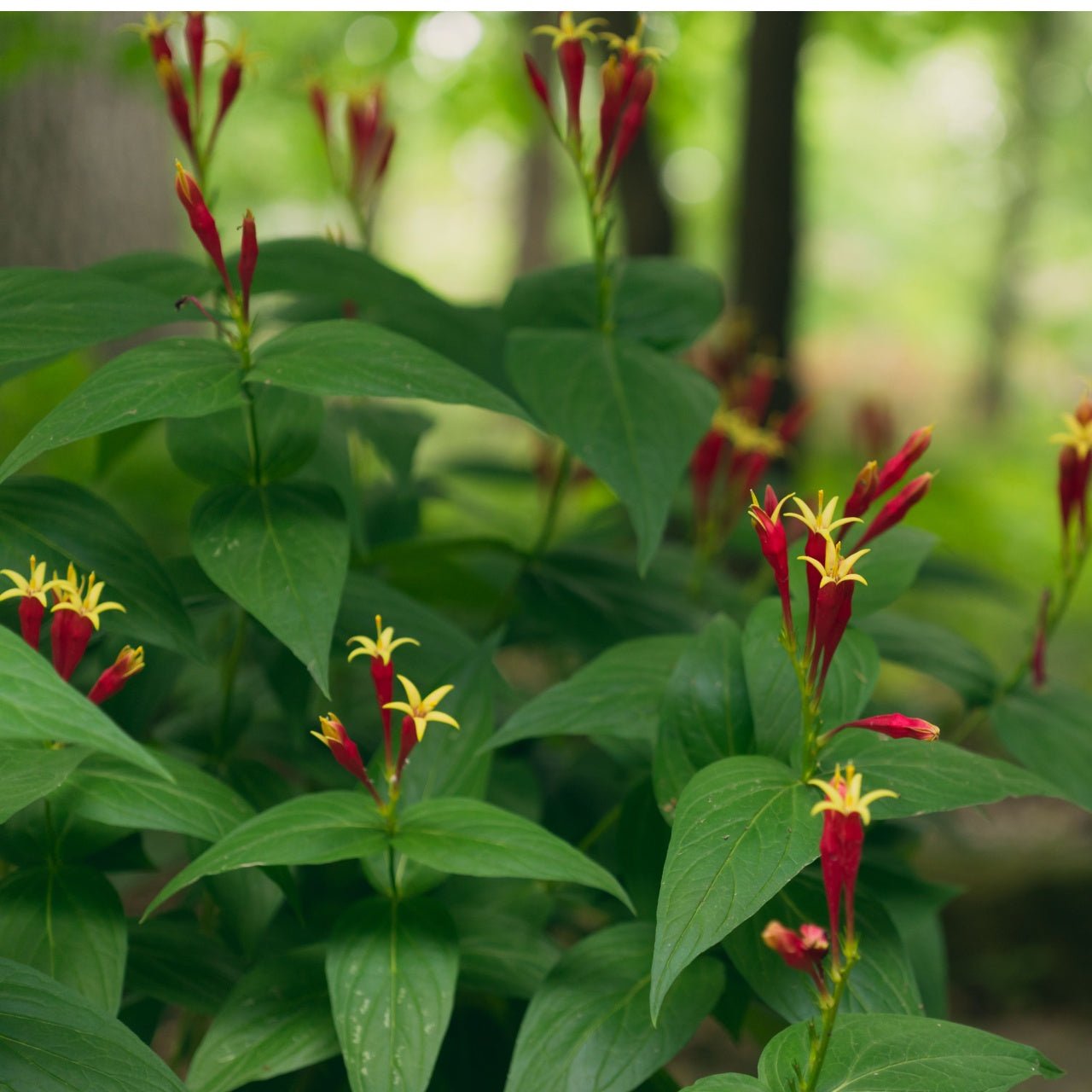TN Nurseries best selling perennials
1. Indian pinks
3. Phlox
4. Jacobs ladder
5. Violets
Perennial Plants are most loved for flower beds and gardens. Unlike annual plants, they have a long life span of more than a decade. They come in a wide range of colors, shapes, and sizes. The best thing about perennials is that they provide color and interest to your garden for many years with very little maintenance, and they do not have to be taken up for harsh winter weather. Annuals die when planted at the end of summer; perennials continue to live on for years.
There are many choices for shade perennials as well. For example, Virginia Bluebells is an excellent shade perennial, as are columbine plants, dutchman breeches, Lily of the valley, and many more garden favorites.
You can still grow beautiful perennials in shaded areas. All they need is moist soil rich in organic matter, and they will be content. Therefore, planting perennials is the way to go if you have a shady spot in your garden that needs some color.
There are many beautiful shade perennials to choose from, but here are our top 5 favorite picks that'll add more beauty to your garden.
- Astilbe - Goat's Beard Plant
Astilbe is a popular shade perennial that comes in various colors, such as white, pink, and red. This perennial enjoys moist, well-drained soil and partial to full shade. A later spring or summer bloomer can grow up to 3 feet tall.
These shade perennials are perfect for adding some color to your garden. They are also deer resistant and make excellent cut flowers. Other than adding to the beauty of your garden, Astilbe also helps in several medical conditions such as the treatment of ulcers, bleeding during childbirth, inflammation, body ache, diarrhea, and dysentery
- Hosta - Plantain lily
Hosta's are a versatile shade perennial in many colors, shapes, and sizes. Thrives in moist, well-drained soil and partial to full shade. Hosta's bloom mid to late summer and can grow up to 3 feet tall.
These plants are ideal for shady areas under trees or shrubs. They are also deer resistant and make excellent groundcover. You can divide hostas every 3 to 4 years to keep them looking their best.
- Trillium
If you're looking for an easy-to-grow, shade-loving perennial that will add some real pizzazz to your garden, look no further than the Trillium. There are many species of Trillium, all of which are native to North America.
These perennial plants have three large, showy petals in various colors: white, pink, red, and purple. They bloom in early spring and prefer shady, wooded areas. If you wonder whether Trillium helps treat diseases, the answer is yes.
According to a study, Trillium effectively treats stomach ulcers and inflammation. It also helps balance your hormones and is suitable for your skin if you have bruises or inflammation.
- Columbine
Columbine is a bright and cheerful addition to any shady garden. It blooms in various colors, including blue, pink, purple, and red. Columbine is a low-maintenance perennial that will self-seed in the garden.
My favorite shade of Columbine is purple, but the blue ones are also beautiful. These perennials require little care and will naturalize in the garden. Columbines bloom in the spring and are an excellent addition to any shade garden.
They don't like to be disturbed, so leave them be once you have them planted in a location. It blooms for many years to come.
- Bleeding Heart
Bleeding heart is a classic old-fashioned shade perennial. It has long drooping flowers that are pink, red, or white. A bleeding heart does best in partial shade and moist, well-drained soil. It will go dormant in the summer if it is too hot and dry.
Bleeding heart is a beautiful shade perennial that adds romance to the garden. The flowers look like little hearts, and they bloom in the spring. The plants can get up to 3 feet tall and 2 feet wide. They do best in partial shade and moist, well-drained soil. They will go dormant in the summer if it is too hot and dry.
So these are the five shade perennials that are easy to plant, but if you are freshly introduced to such plants, don't miss out on our tips on how to plant them.
Tips on Planting Shade Perennials in your Garden
Shade perennials are perfect for adding some color to your garden. They are also deer resistant and make excellent cut flowers. But before you start planting, you should know a few things. Here are our top tips on planting shade perennials in your garden:
- Grouping according to colors
When you are planting your shade perennials, it is a good idea to group them according to color. It will give your garden a more unified look. You can also use this method to create a color scheme for your garden. Moreover, it will make it easier for you to choose the right plants for your garden.
- Fertilizing
Shade perennials need to be fertilized regularly to keep them looking their best. You can use a slow-release fertilizer or organic compost. It will help your plants to grow and bloom correctly.
- Pruning
Pruning is a great way to ensure that your perennials stay healthy and look their best. Prune them back when dormancy starts or before winter before new growth begins. There are many different ways to prune your perennials, so be sure to research the best way to prune the specific type of plant you have.
- Putting the shade plants in the best spot
When planting your shade perennials, please place them in an area that receives at least four hours of indirect sunlight daily. They will also need to be in a well-drained spot, as they will not do well in soggy soil.
It's also a good idea to mulch around your shade plants to help retain moisture and keep the roots cool.
- Watering
Lastly, shade perennials must be watered regularly, especially during hot summer. Be sure to check the soil before watering to make sure it is dry several inches down. Overwatering can be just as harmful to plants as not watering them enough, so be sure to use a moisture meter or your finger to test the soil before watering.
And by following these simple tips, you'll be sure to have beautiful and healthy shade perennials that will make your garden look as pretty as you.
Wrapping Up
Perennials are a great addition to any garden because they come back yearly with little maintenance. And, if you choose the right plants, they can provide color and interest in your garden from spring through fall.
When selecting perennials for your garden, consider each plant's sun and shade. Many beautiful shade perennials will thrive in areas that don't get a lot of direct sunlight.
Some of the best shade perennials to consider planting in your garden include Hosta, Daylily, Bleeding Heart, Astilbe, and Foamflower. We hope our recommendations helped you in some way or the other, and the tips shared, in the end, will help you too.
If you have any suggestions, do let us know in the comment sections, we are open to suggestions :).
TN Nursery best selling perennials
1. Ajuga
2. Jewel weed
3. Orange daylilies
4. milkweed
Read more

Bishop's Cap is a stunning succulent scientifically known as Astrophytum myriostigma. This succulent is a sight to behold with its unique and mesmerizing star-shaped appearance.

Native to China and Korea, crepe myrtles have soared in popularity in the US. They also can now flourish in colder climates. However, that is not a guarantee. It's important to remember that only h...
Family Owned and run with pride
Nestled in the heart of Middle Tennessee, TN Nursery is a proud family-owned business rooted in tradition, quality, and a deep love for plants. For generations, we’ve been dedicated to providing exceptional service and building lasting personal connections with gardeners, landscapers, and nature enthusiasts across the country. Our mission is to make planting and gardening more accessible, enjoyable, and rewarding—whether you’re a seasoned horticulturist or just starting your first flower bed.
We specialize in expertly grown native plants, perennials, shrubs, trees, and ferns that thrive in a variety of climates. Every plant we offer is carefully nurtured on our farm to ensure strong root systems, healthy growth, and long-term success in your landscape. From vibrant evergreens to colorful blooms and ground covers, we offer an expansive selection to help you create the outdoor space of your dreams.
At TN Nursery, we believe in more than just selling plants—we’re here to help you transform your garden into a place of beauty, sustainability, and joy. Our knowledgeable team is always available to answer questions, offer guidance, and share tips to ensure your planting experience is a success. Join our growing family of happy customers and let us help you bring your garden vision to life.



